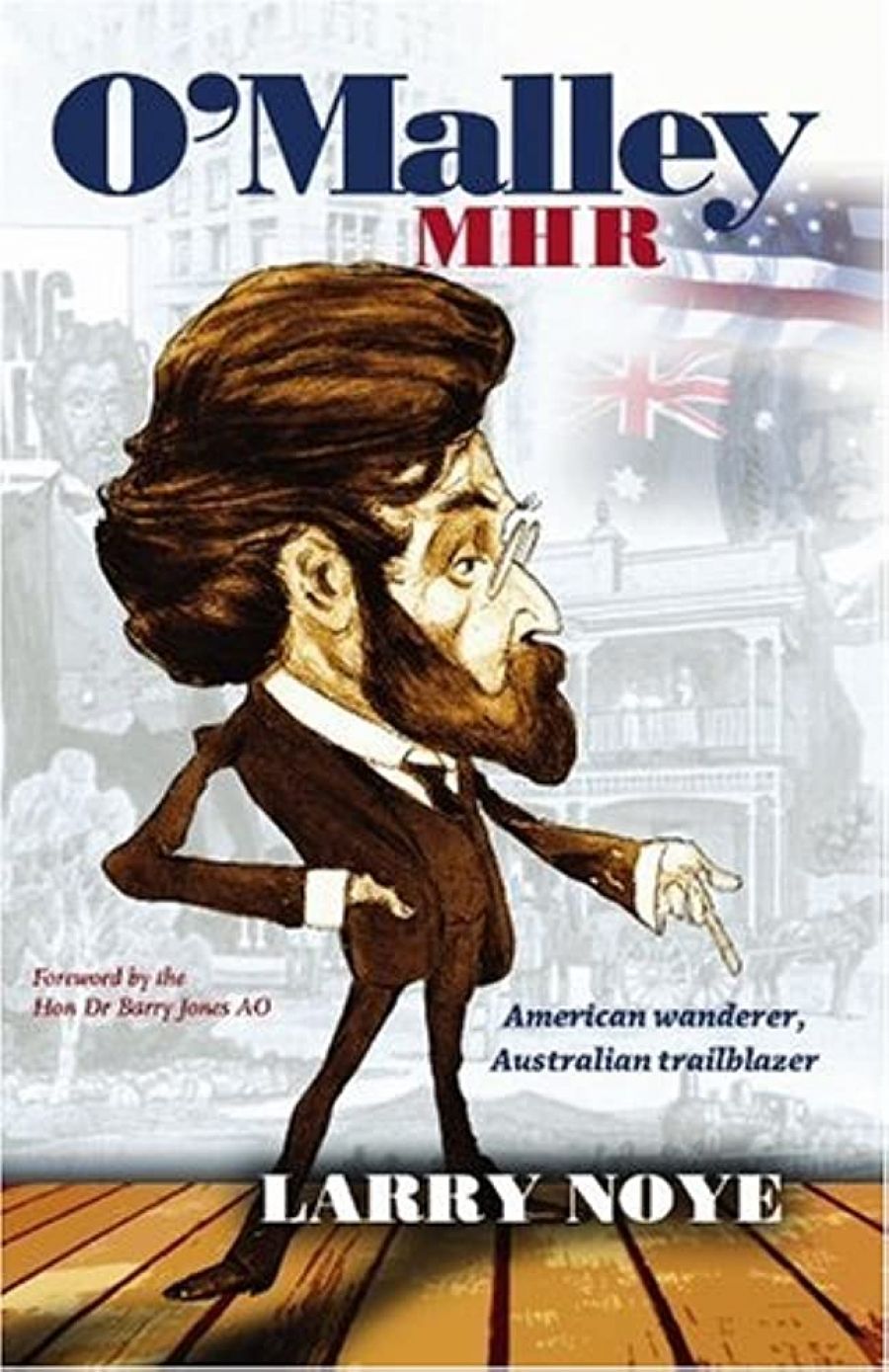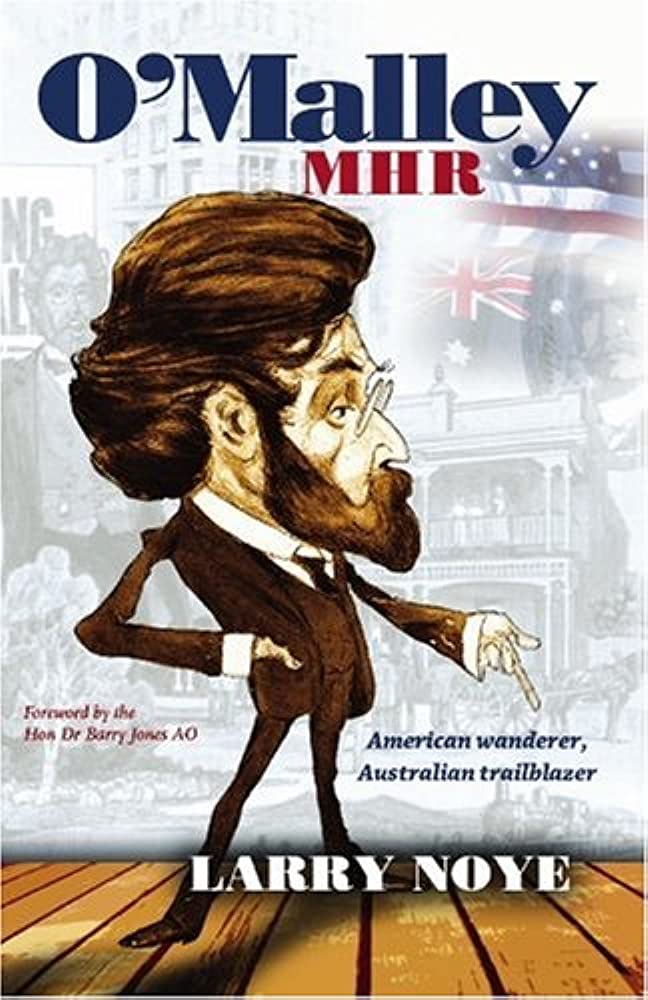
- Free Article: No
- Review Article: Yes
- Article Title: Royalty, Dying Hard
- Article Subtitle: A testament to persistence
- Online Only: No
- Custom Highlight Text:
This book is a testament to the persistence of the legend of King O’Malley. Larry Noye tells the story of the self-proclaimed founder of the Commonwealth Bank and builder of Canberra very much as O’Malley himself never tired of telling it, heavily embellished with the exaggerated ‘spreadeagle’ rhetoric and baloney of the hot gospellers, land-boomers, social reform cranks, and snake-oil salesmen of the American West among whom O’Malley took his first steps in the adult world. The book’s strength is that its author is so intoxicated with the O’Malley legend that it faithfully gives us a picture, as it were, straight from the horse’s mouth, full of colour and incident; its weakness is that it fails adequately to step back and separate fact from fiction.
- Book 1 Title: O'Malley MHR
- Book 1 Biblio: Neptune Press, $13.30 pb, 304 pp
- Book 1 Cover Small (400 x 600):

Taking O’Malley at his word, Noye recounts that O’Malley was born in 1858 on the Canadian border, possibly in Canada, probably in the United States. He grew up in Kansas and worked for a time in his uncle’s small New York bank before going to the West coast to seek his fortune. O’Malley soon learnt that good looks, a quick wit, flexible morals, and an idealistic gallantry towards the ‘fair sex’ provided a good recipe for life as a land and insurance salesman. Along the way he collected a stock of ‘Christian’ convictions that were to do him all his life: pacificism, self-help, temperance – he was a fanatical opponent of ‘stagger juice’ – and Henry George’s single tax.
An early adventure saw him involved as a principal of the Waterlily Rockbound Church in an attempt to take advantage of a Texas Jaw which gave churches free land. According to O’Malley, he married one of his followers, Rosy Wilmot, and went back East to sell insurance and settle down. But Rosy died tragically soon afterwards and, broken-hearted, O’Malley set out to see Europe and study banking. He returned briefly to the United States and then left for Australia.
He gravitated to Adelaide, where, wooing the newly-enfranchised women voters, he served two terms in the House of Assembly as a Labor M.P, gaining a reputation for screwball schemes, such as banning barmaids as unseemly and nationalising medicine. In the meanwhile he sold a great deal of insurance, notably on trips to the mining areas of Tasmania and Western Australia, and began to invest in real estate in Melbourne.
A staunch. Federationist – what was good enough for Uncle Sam was good enough for Australia too – O’Malley was elected to the first federal parliament as an M.H.R. to represent the miners of West Tasmania. He did so until his defeat in 1917. At first regarded as too unreliable for the front bench, he eventually became Minister for Horne Affairs in the Fisher and Hughes cabinets. He was responsible, among other things, for commissioning the design of Canberra; for the regulations that made Canberra a pub-free city until 1927; for the lease system for allotting Canberra’s land; and for starting the transcontinental railway. But his deepest interest was in banking.
Noye supports O’Malley’s claim that he almost single-handedly forced a reluctant Fisher and Hughes to establish the much talked about and long overdue Commonwealth Bank in 1912. It was O’Malley who civilised capitalism, or at least started to, by founding a people’s bank. Neverthless it was only in 1945 that the Commonwealth became a central bank in the sense that O’Malley wished, and it still does not have the involvement of the state governments that he regarded as essential.
The O’Malley of fact was a much more complicated figure than the one Noye paints. A.R. Hoyle’s stringent 1981 biography, King O’Malley: The American Bounder, which Noye largely ignores, successfully challenges the legend on many points. O’Malley was probably born in Kansas, but invented the Canadian story to legitimise his sitting in Australian parliaments for which of course one had to be a British subject. The marriage to Rosy was a fiction, and the trip to Europe does not tally with a close examination of O’Malley’s chronology. An embezzlement charge, not a broken heart, induced his hasty departure from his native country. More seriously, Hoyle wondered how the socialist champion of the people reconciled his beliefs with his ownership of some two dozen slum tenements and small factories and his delight in personally collecting the rents armed with a gun to ward off robbers. Most seriously of all, as Kim Beazley senior demonstrated in an article in the Australian Journal of Politics and History some years ago, though O’Malley was active in the cause of the people’s bank, he was pushing at an open door, and in its final form the Commonwealth Bank owed more to other hands than to O’Malley’s.
But all this aside, it was O’Malley’s colourful speech and behaviour that made him a legend, and Noye’s book is brimful of anecdotes and O’Malley-isms gleaned from prodigious delvings into local and provincial newspapers, and is profusely illustrated with rare cartoons. We meet the King in his ten-gallon hat (tied to his coat button with a flash of red ribbon), a red beard, a triple-decker tie, an opal and diamond tie-pin, and a russet-apple-coloured suit with a full frocked coat. We see one of his revivalist meetings go awry when the Archangel Gabriel, waiting for his cue to miraculously appear high in a tree in a cloud of magnesium smoke, falls down prematurely after having had too much ‘stagger juice’. We hear him describe capitalists as ‘monopolistic boodle bludgers’, soldiers as ‘plumed roosters’, Sir John Downer as a ‘shrivelled political deformity’, and the Argus as a ‘relict … of … antedeluvian, fossilised mummydom masquerading in the pious garb of up-to-date hypocrisy’. We delight in his promise to ‘ring-bark the cockies’ and his telling the taxman in the 1940s that his occupation was that of a ‘death dodger’. That the book is littered with spelling and grammatical errors and eccentric authorial interventions in a way makes it the more authentic – O’Malley’s own expression was at best approximate. And it is all very entertaining; myth has a tendency to be more interesting than reality. Indeed this book reads as if it were O’Malley’s autobiography.


Comments powered by CComment